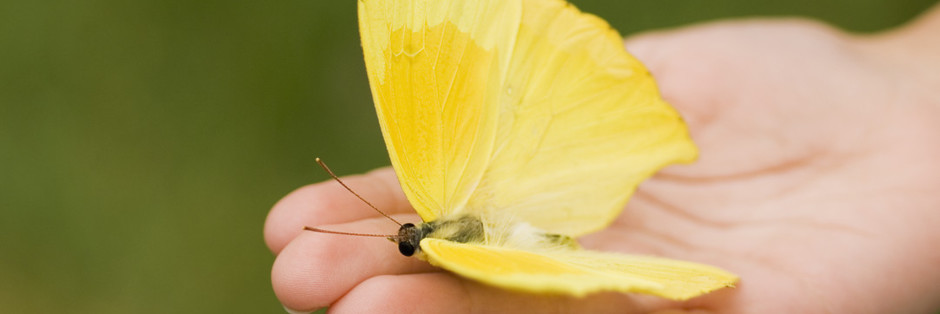H7N9 AVIAN BIRD FLU PROTECTION
FOR THIS
Corona virus 2019
TheCorona virus 2019 avian bird flu virus is remarkably similar to the 1918 outbreak, although it has thus
far only crossed the species barrier from birds to humans in a small number of people who were poultry workers and were exposed daily to the virus in infected birds. The virus is, however, mutating
and scientists are concerned that it could quickly develop into a new form that can easily be passed from human to human. Like the 1918 virus, the current bird flu virus causes tissue destruction in
the lungs. During the 1918 flu pandemic, most victims choked to death as their lungs dissolved and filled with fluid from the damage inflicted by the virus.THIS NEW STRAIN UF FLU VIRUS COULD
BE DEADLEY IF ALLOWED TO GET OUT OF CONTROL
Defenses against Bird Flu in an Outbreak:
Vaccine. The development of a vaccine is still the best method to avoid a devastating pandemic, but even if a vaccine is developed in the near future, it is not likely that enough vaccine could be
manufactured and distributed in time to avoid the deaths of millions of people.
Tamiflu and other antiviral medications. Tamiflu lessens the severity of the flu and gives the body a chance to defend itself if it is taken within the first two days of the onset of flu symptoms.
However, Tamiflu is manufactured in a complex ten-stage process and it can take up to a year to produce a single batch. Tamiflu is currently in extremely short supply and it is doubtful that enough
could be produced to help fight a pandemic outbreak.
Wash your hands, do not touch your face and isolate yourself. Most flu viruses are picked up on your hands and contracted through touching your face or by breathing airborne particles. Washing your
hands and isolating yourself from other humans will help, but may not be practical for most people.
Wearing a bird flu mask. Masks that effectively filter airborne particles and aerosols may provide a strong degree of protection from exposure to the bird flu virus, particularly when no other
protective methods are available. Masks that provide this degree of protection are being referred to as "bird flu masks".
Which Masks are Most Effective?
While wearing a mask does not offer complete protection, it does offer some protection. Given that other alternatives may be impossible to
obtain once an outbreak has been identified, buying bird flu masks is cheap insurance and one that can offer a fair amount of protection when other reasonable precautions are
taken.
Masks that effectively filter small, airborne particles and aerosols (sneezing) are considered to be the most effective. Different official
rating standards for particulate and respirator masks have developed in the USA and Europe. Although the official names for the standards differ, the effectiveness of masks that meet the respective
standards are very similar. USA Standards Efficiency *
NIOSH N95 94%
NIOSH N99 99%
NIOSH N100 99.97%
European Standards Efficiency *
EN149:201 FFP1 80%
EN149:201 FFP2 94%
EN149:201 FFP3 99%
* efficiency rating when tested with .3 micron and above particle sizes
As you can see, not all masks are the same, nor do they all offer the same level of protection against airborne particles. Obviously, the
greater the efficiency, the greater the protection against inhaling airborne influenza.
Although not exactly the same, the European FFP3 standard is a close equivalent to the USA N99 filtration standard. A mask meeting the USA’s N100
standard exceeds this and offers protection beyond that of the top European standard. The Centers for Disease Control (CDC) has tested the N100 mask along with other precautions and found it to be
superior to other methods. Always check any mask that you buy for the proper certification. Masks should be stamped or labeled with the standard to which they were manufactured and
tested.
While masks can offer added protection from airborne viruses such as H5N1 avian flu and SARS,AND THE PRESENT THREAT Corona virus there is no guarantee that you
will avoid infection. In the case of a flu outbreak, you should therefore take additional steps to avoid exposure, such as
washing your hands frequently, not touching your face and avoiding crowds where infected people
may be present.
When should you buy a bird flu mask?
DECEMBER 2013
new type of flu has made the jump
from birds to people in China - it is known as Corona virus 2019
The World Health Organization says it as an "unusually dangerous virus", but
it is still too soon to say whether it will pose a global threat to human
health.
How bad is it?
Scientists have described the new virus as a "serious threat" and a "cause
for concern". Since the first case was detected, at the end of March, more than
100 people have been infected - this is an unusually high rate for a new
infection. A fifth of the patients have died, a fifth have recovered and the
rest remain critically ill. There is no doubt H7N9 is a dangerous infection.
What are the symptoms?
The main symptom is severe pneumonia. The virus can also overload the immune
system, causing what is known as cytokine storm. Blood poisoning and organ
failure are also possible.
Should I worry?
Not yet. It is a virus that can spread only from a bird to a person, at least
for now. It has been detected in chickens, ducks and pigeons at markets in
China. Unless you have close contact with birds in the regions affected, the
risks are low. However, this can change as the virus mutates. The number of new
cases has also slowed with a gap in the middle of May when no new infections
were reported for more than two weeks.
What should I keep an eye out for?
The biggest alarm bell with a new bird flu is if it starts to spread among
people rather than via birds. The technical phrase is human-to-human
transmission. This would give it the capacity to spread around the world in both
poor and rich countries. The virus is not there yet, but the concern is that it
will mutate.
It will also be a problem if cases continue to soar. This is a numbers game -
the more people infected, the more times the virus replicates, the greater the
chance of it becoming able to spread in people. Also if the virus jumps to other
animals, particularly pigs, this can also increase the chances of dangerous
mutations developing.
 The
new H7N9 influenza
The
new H7N9 influenzavirus
Has this happened before?
Viruses jump species quite regularly. The last major bird flu, H5N1, made the
jump to people in 1997 and has since killed more than 300 people. But H5N1 also
remains unable to spread between humans. The most infamous pandemic - the 1918
Spanish flu, which killed perhaps 40 million people - probably came from birds.
The fear is that eventually a new virus will sweep the world in a similar
fashion. Once again it is simply a numbers game, eventually it will happen and
some would argue we are overdue.
How does H7N9 bird flu differ from H5N1?
H7N9 is less deadly than H5N1, which killed 60% of those infected. This is a
good thing for people infected, but may be a bigger problem globally as it means
more people would be able to spread the infection if it could be passed from
person to person.
The other major difference is in the birds. H5N1 killed birds, H7N9 does not.
This is important as it is much easier to track the spread of a fatal infection,
and H7N9 infected flocks will be harder to detect.
What is a pandemic?
It is when the same strain of an infection is popping up all over the
world.
How close to a pandemic are we?
It is impossible to say in weeks or months how far off a pandemic we are. But
there is information inside the virus's genetic code which provides some clues.
Controversial research to modify the H5N1 virus highlighted five key mutations
needed for it to spread between people.
Two of the five have been found in H7N9. It shows the new bird flu has some,
but not all, of the mutations which would help if become a pandemic. But that
does not mean it will acquire the other three mutations or what will happen if
it does.
Where has the virus spread?
No human cases have been detected outside of China.
Is it safe to visit China?
The World Health Organization has not recommended any travel restrictions as
the total number of cases so far is still low.
Could there be cases elsewhere?
Yes, the virus could spread through birds to other countries. People could
also pick up the infection in China and travel before they start to feel ill. It
means countries around the world are preparing for cases.
Do the drugs work?
The H7N9 influenza virus does seem to be susceptible to antiviral drugs such
as Tamiflu, but there is little experience of using them in the field. However,
a study published in May showed that resistance emerged in three out of 14
people being treated at one hospital. Doctors there raised concerns at the
"apparent ease" with which the virus developed resistance to the drug.
Is there a vaccine?
At the moment there is no vaccine, but the earliest stages of developing one
are under way. It is not yet known if there will be a need for one. It will be a
difficult decision to start manufacturing a vaccine as there is limited global
capacity for making influenza vaccines. It is grown in hens' eggs and takes
months. An H7N9 vaccine would affect the production of seasonal flu vaccines.
What do those H's and N's mean?
They are used to classify different types of influenza A. The H stands for
haemagglutinin and the N stands for neuraminidase. Both are proteins on the
surface of the virus which come in different varieties, each of which is given a
different number.






